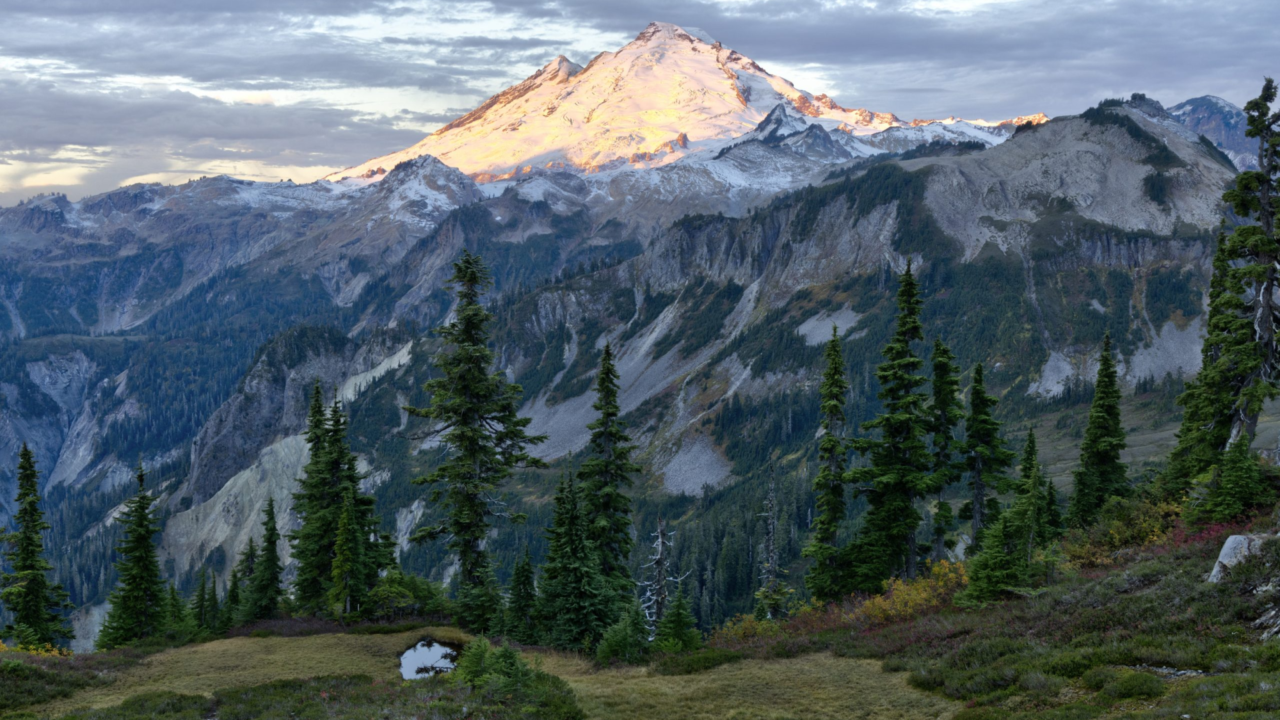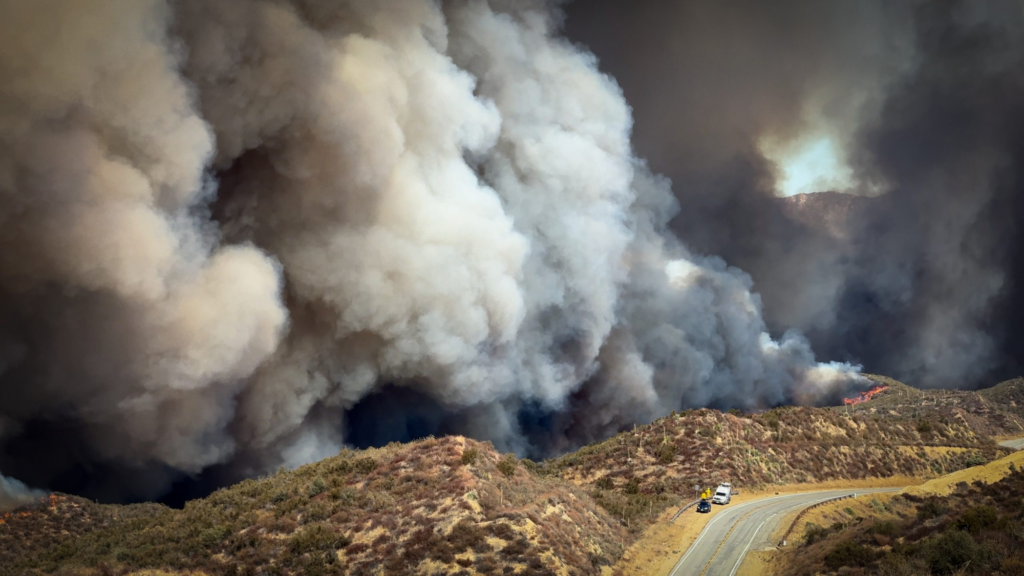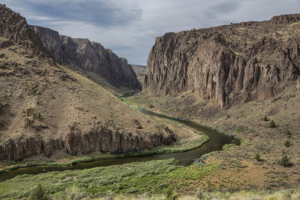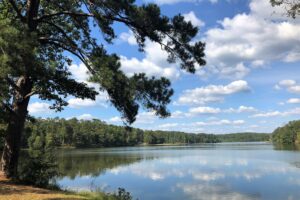Senate Republicans Want To Sell 3 Million Acres of Public Land
The vast majority is fire prone and too far away from communities to make sense for housing, research shows. Heather meadows in Mt. Baker-Snoqualmie National Forest in Washington. (Bob Wick/U.S. Forest Service)
Heather meadows in Mt. Baker-Snoqualmie National Forest in Washington. (Bob Wick/U.S. Forest Service)
This story was originally published by High Country News.
Over 3 million acres of public land could be sold in the next five years after Senate Republicans on the Energy and Natural Resources Committee reintroduced land sales into the party’s major spending bill.
Released on Wednesday night, the megabill text includes a proposal for extensive transfers of U.S. Forest Service and Bureau of Land Management lands, supposedly for housing but with leeway for other uses. The new bill escalates a recent GOP push to sell federal land. In May, the House Natural Resources Committee passed a version of the spending bill that called for 500,000 acres of public land sales in Nevada and Utah.
The Senate bill instructs the secretaries of Interior and Agriculture to dispose of 0.5% to 0.75% of all BLM and Forest Service lands. While the percentage appears small, each agency manages huge swaths of land, mostly in the Western U.S. The BLM oversees 245 million acres, equating to 1.23 million to 1.84 million acres for sale under this proposal. The Forest Service manages 193 million acres, which would mean 970,000 to 1.45 million acres would be sold off if the bill passes.
In all, the amount of public lands for sale could be as high as 3.29 million acres. The bill would allow sales in all western states except Montana.
“This Senate version is just open season on public lands.”
“It’s a travesty that Senate Republicans are putting more than 3 million acres of our beloved public lands on the chopping block to sell at fire-sale prices to build mega mansions for the ultrarich,” Patrick Donnelly, Great Basin director at the Center for Biological Diversity, said in an emailed statement. He noted that the proposal’s broad language differed from the House version that focused on lands already identified for disposal in resource management plans.
“This Senate version is just open season on public lands,” Donnelly added.
If passed into law, the new proposal would create a process for states, local governments and tribes to have a “right of first refusal” on public land sales — suggesting that if these entities did not want to purchase the parcels, private buyers would be considered. The proposal also prohibits the sale of national parks (which are not managed by the BLM or the Forest Service), national monuments, wilderness areas and national recreation areas, as well as land with mining claims, grazing permits, mineral leases and right of ways.
Local governments near parcels that sold would get 5% of the proceeds “for essential infrastructure directly supporting housing development or other associated community needs,” while the public land agency would get 5% for deferred maintenance.
Attempts to sell public land are not new. But during President Donald Trump’s second term, opponents of federal land management have couched transfers as a solution to the housing crisis. The Senate committee’s one-page summary of the plan blames the federal government for “depriving our communities of needed land for housing and inhibiting growth.”
A recent analysis by Headwaters Economics found that public land transfers offer little promise as a housing solution.

“Our findings show that opportunities are limited to a few states and are complicated by wildfire and drought risks, as well as other development challenges,” the researchers wrote. They found that less than 2% of Forest Service and Department of Interior land is close enough to population centers to make sense for housing development.
The only viable chunks of Forest Service land — defined as 5,000 acres or more — near towns are in Arizona, Utah and Oregon. Department of Interior parcels that could work for housing development are primarily in Nevada, Arizona, California, New Mexico and Utah, according to the analysis. Economists also found that more than half of federal lands within a quarter-mile of towns needing more housing and a population of at least 100 people had high wildfire risk.
Research also shows that creating more housing in scenic resort towns and gateway communities doesn’t usually result in more affordable housing. “If you build more housing and your community is a very popular place to visit, then often that housing gets consumed by short-term rentals” or second homes, Danya Rumore, founder and co-director of the Gateway and Natural Amenity Region Initiative at Utah State University, told High Country News last year.
A vote on public land sales would go to the entire Senate.
A broad bipartisan coalition opposes selling public land, especially among Western voters. Some members of the committee, like Steve Daines, R-Mont., have specifically said they would not support disposing of federal land. “Sen. Daines opposes public land sales,” spokesperson Matt Lloyd told the Montana Free Press on June 4. Sen. James Risch, R-Idaho, has also publicly opposed such sales. Rep. Ryan Zinke, R-Mont. — Trump’s former Interior secretary — was instrumental in removing land sales from the House spending bill.
Sen Mike Lee, R-Utah, the chair of the committee, has long championed attempts to sell federal land or transfer it to the states. Other Energy and Natural Resources Committee members represent Wyoming, Idaho, New Mexico, Utah, Washington, Oregon, Nevada, Colorado, California, Arizona and Alaska — all states with thousands of acres of public land.
If the committee passes this version of their megabill, a vote on public land sales would go to the entire Senate and then the House of Representatives. If it becomes law, it could “establish a model for members of Congress to liquidate America’s lands at any time to pay for their pet projects, with little benefit to local communities,” said Michael Carroll, director of the BLM campaign at the Wilderness Society, in a statement.
WAIT BEFORE YOU GO...This year, the ground feels uncertain — facts are buried and those in power are working to keep them hidden. Now more than ever, independent journalism must go beneath the surface.
At Truthdig, we don’t just report what's happening — we investigate how and why. We follow the threads others leave behind and uncover the forces shaping our future.
Your tax-deductible donation fuels journalism that asks harder questions and digs where others won’t.
Don’t settle for surface-level coverage.
Unearth what matters. Help dig deeper.
Donate now.







You need to be a supporter to comment.
There are currently no responses to this article.
Be the first to respond.